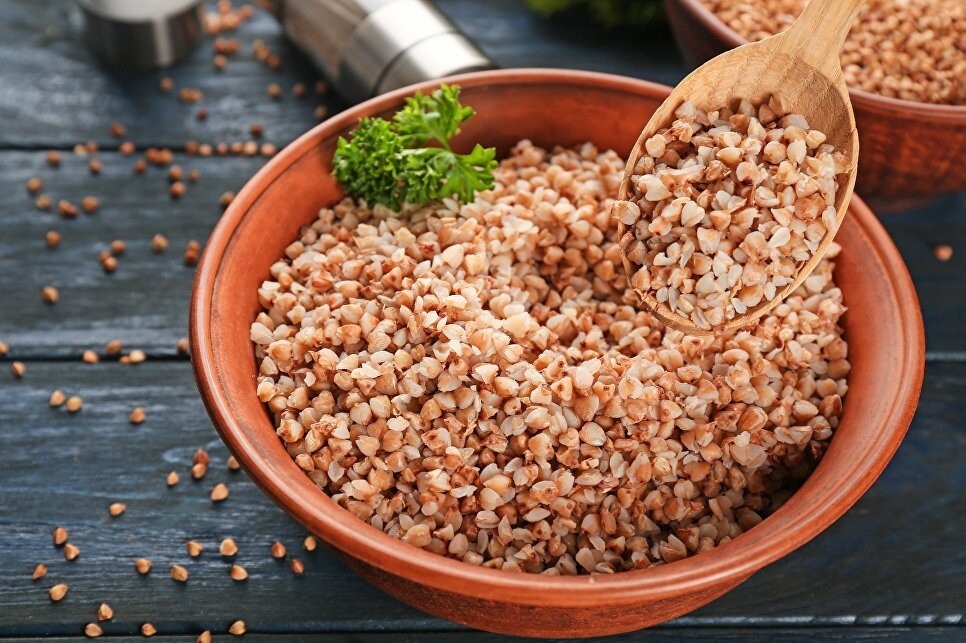
Caloric content and nutritional value
According to research, the beneficial properties of buckwheat for the body are due to its unique chemical composition, which contains more than 50 valuable substances. In terms of the amount of protein, it is equal to meat, but it stands out favorably against its background due to its low fat content. The nutritional value of cereals is distributed in the following proportions:
– Carbohydrates – 58%
– Proteins – 12.8%
– Fats – 3.3%
– Fiber – 11.3%
– Water – 14%
The calorie content of raw buckwheat kernels is 310 Kcal per 100 g. For cooked buckwheat porridge, this indicator is even less – only 132 Kcal, so it can be added to the diet of athletes, preventive and therapeutic diet. An increased volume of carbohydrates and a long period of their assimilation leave a feeling of satiety for a long time, which makes buckwheat porridge especially relevant for losing weight.


